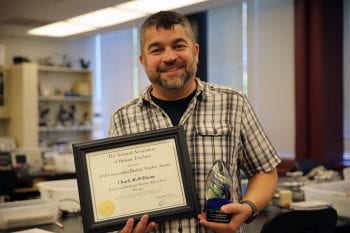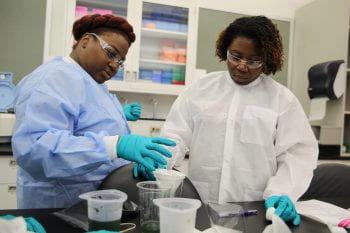The National Association of Biology Teachers has awarded Chuck McWilliams, co-director of the Master’s in Biology for Science Teachers Program at Washington University in St. Louis and a teacher-leader for the Maplewood Richmond Heights School District, the 2018 Outstanding Biology Teacher Award for Missouri. To read the entire article visit WUSTL’s The Source.
Chuck McWilliams named state’s top biology teacher

